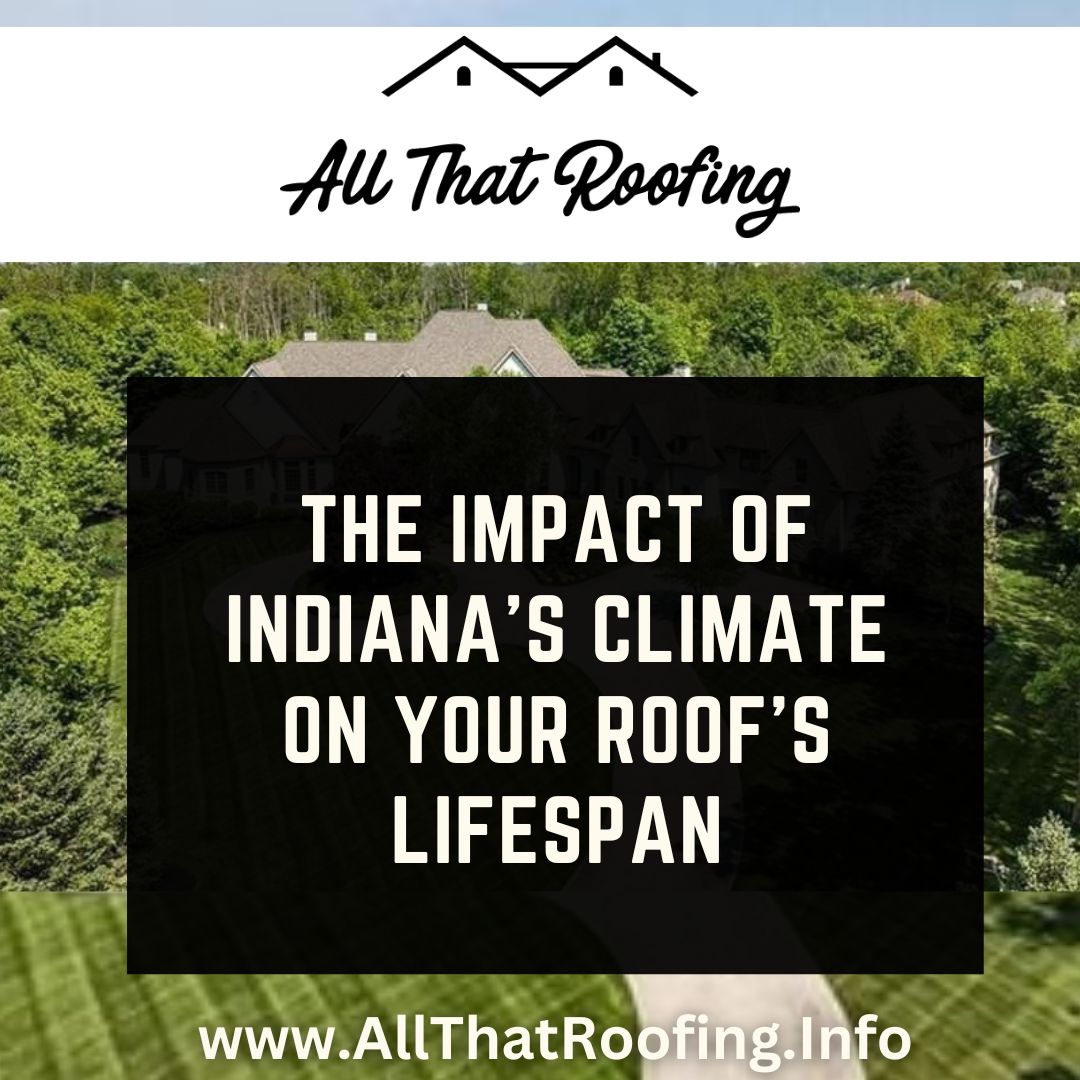Understanding Indiana’s Climate
Indiana’s climate is characterized by a mix of humid continental and humid subtropical zones. It experiences hot and humid summers, as well as cold winters with moderate to heavy snowfall. The state is also prone to severe weather events such as thunderstorms, tornadoes, and hailstorms. These weather conditions can take a toll on your roof, affecting its lifespan and performance.
The Influence of Temperature Fluctuations
Temperature fluctuations play a significant role in determining your roof’s lifespan in Indiana. The state’s climate sees temperatures ranging from below freezing during winter months to highs of 85°F or more in the summer. These temperature swings cause your roofing materials to expand and contract, leading to potential damage and reduced longevity.
Impact on Different Roofing Materials
- Asphalt Shingles: The most common roofing material in Indiana, asphalt shingles are susceptible to damage from temperature fluctuations. In extreme heat, they can become soft and more prone to tearing, while cold temperatures can make them brittle and susceptible to cracking.
- Metal Roofs: Metal roofs are more resistant to temperature changes than asphalt shingles, but they can still suffer from expansion and contraction. This can cause fasteners to loosen or panels to warp, reducing the roof’s overall effectiveness.
- Wood Shingles and Shakes: Wood is a natural insulator, making it less affected by temperature changes. However, wood can still warp, split, or rot due to moisture and humidity changes in Indiana’s climate.
- Tile Roofs: Tile roofs are highly durable, but they can still be affected by temperature fluctuations. Frost damage is a particular concern, as it can cause tiles to crack and weaken.
The Effects of Precipitation
Precipitation is another factor that impacts your roof’s lifespan in Indiana. The state receives an average of 40 inches of rainfall and 22 inches of snowfall annually. Excessive moisture can lead to various issues such as leaks, mold growth, and rot.
Dealing with Rain, Snow, and Ice
- Rain: Heavy rainfall can cause leaks in your roof, especially if it’s already damaged or nearing the end of its life. Be sure to inspect your roof regularly for signs of water damage and address any issues promptly.
- Snow: Snow accumulation can add significant weight to your roof, potentially causing structural damage. It’s essential to remove excess snow safely and promptly to prevent damage.
- Ice: Ice dams can form on your roof during the winter months, causing water to back up and potentially leak into your home. Proper insulation and ventilation are key to preventing ice dams and the damage they can cause.
The Impact of Severe Weather Events
Severe weather events are not uncommon in Indiana, and they can be particularly damaging to your roof. Hailstorms, high winds, and tornadoes can all cause significant damage to your roof, reducing its lifespan and requiring costly repairs.
Protecting Your Roof from Severe Weather
- Hail: Hail-resistant roofing materials, such as impact-resistant shingles or metal roofs, can help minimize hail damage.
- High Winds: Proper installation and regular maintenance can help ensure your roof can withstand high winds. Additionally, using wind-resistant materials and securing loose items around your property can minimize wind damage.
- Tornadoes: While no roof can be completely tornado-proof, using materials with high wind resistance and proper installation techniques can help minimize the risk of damage.
Choosing the Right Roofing Materials for Indiana’s Climate
Selecting the appropriate roofing materials for your home is crucial to ensuring your roof’s longevity in Indiana’s climate. Consider the following factors when making your decision:
- Durability: Opt for materials that can withstand the range of weather conditions Indiana experiences, such as temperature fluctuations, precipitation, and severe weather events.
- Energy Efficiency: Choose roofing materials that provide proper insulation and reflect heat in the summer, helping to regulate your home’s temperature and reduce energy costs.
- Maintenance Requirements: Some roofing materials require more maintenance than others. Select a material that you can maintain properly to ensure its longevity in Indiana’s climate.
- Aesthetics: While durability and performance are essential, it’s also important to choose a roofing material that complements your home’s architectural style and adds curb appeal.
- Cost: Consider the initial cost of the roofing material, as well as the long-term expenses associated with maintenance, repairs, and potential replacements due to Indiana’s climate.
Regular Maintenance and Inspections
Proper maintenance and regular inspections are essential to extending your roof’s lifespan in Indiana’s climate. Here are some steps you can take to protect your investment:
- Schedule Regular Roof Inspections: Have your roof inspected at least once a year, or more frequently if your home has experienced severe weather or is more than 10 years old.
- Clean Gutters and Downspouts: Keep your gutters and downspouts clear of debris to ensure proper drainage and minimize the risk of water damage.
- Address Repairs Promptly: If you notice any signs of damage, such as missing or damaged shingles, leaks, or mold growth, address these issues immediately to prevent further deterioration.
- Ensure Proper Ventilation and Insulation: Proper ventilation and insulation are crucial to preventing moisture buildup, ice dams, and heat damage in your attic and roof.
- Trim Trees and Remove Debris: Trim any overhanging branches and remove debris from your roof to minimize the risk of damage from falling limbs or accumulated leaves and twigs.
The Wrap-Up – Indiana Roof Lifespan
Indiana’s climate can have a significant impact on your roof’s lifespan, but by selecting the right roofing materials and prioritizing regular maintenance and inspections, you can protect your investment and ensure your roof remains in optimal condition for years to come.
If you are interested in a visual inspection or a home roof replacement estimate for your residential roof, contact All That Roofing today for a FREE estimate >> 317 – 460 – 1191, fill out the form to the right or email us at info@allthatroofingin.com.

